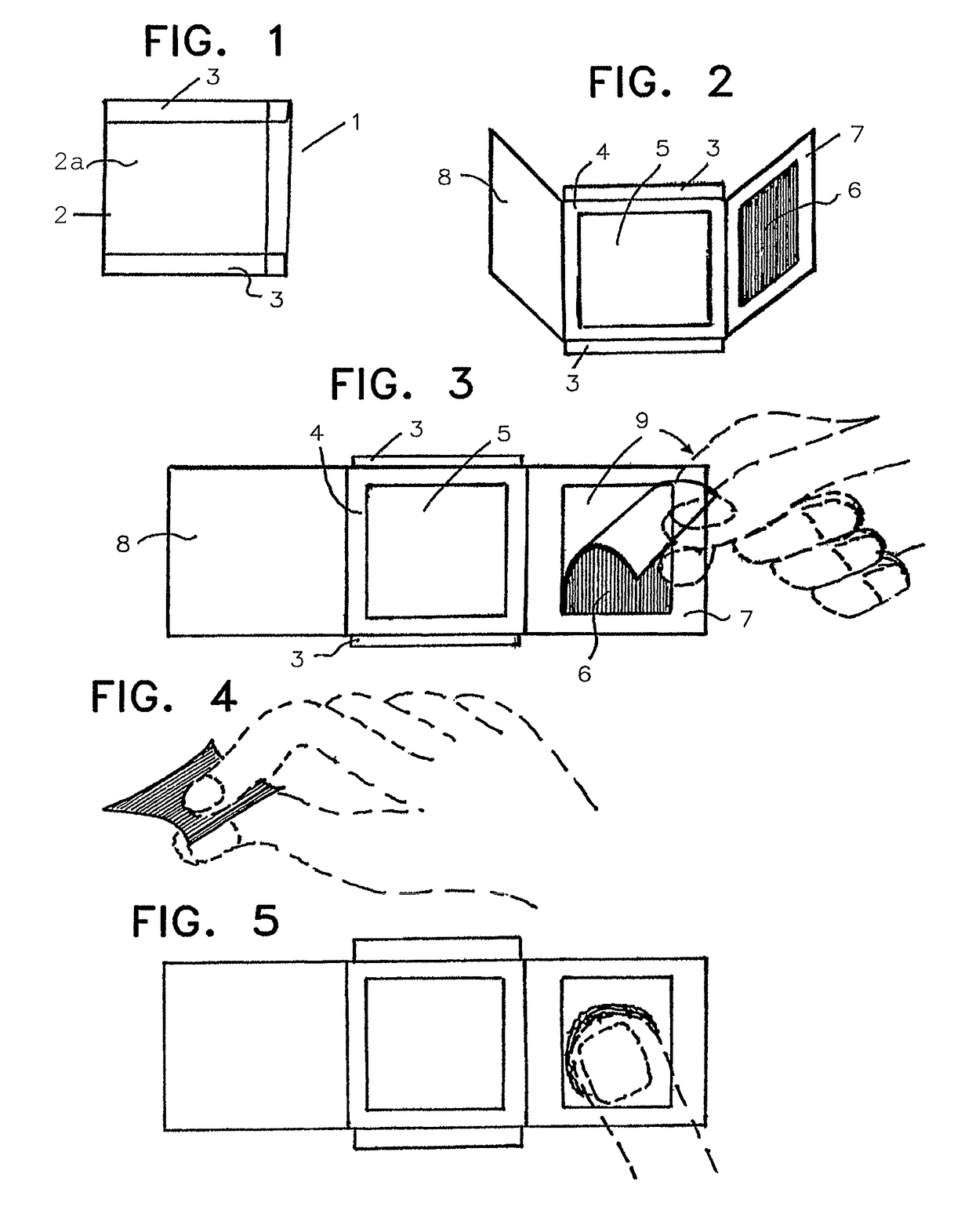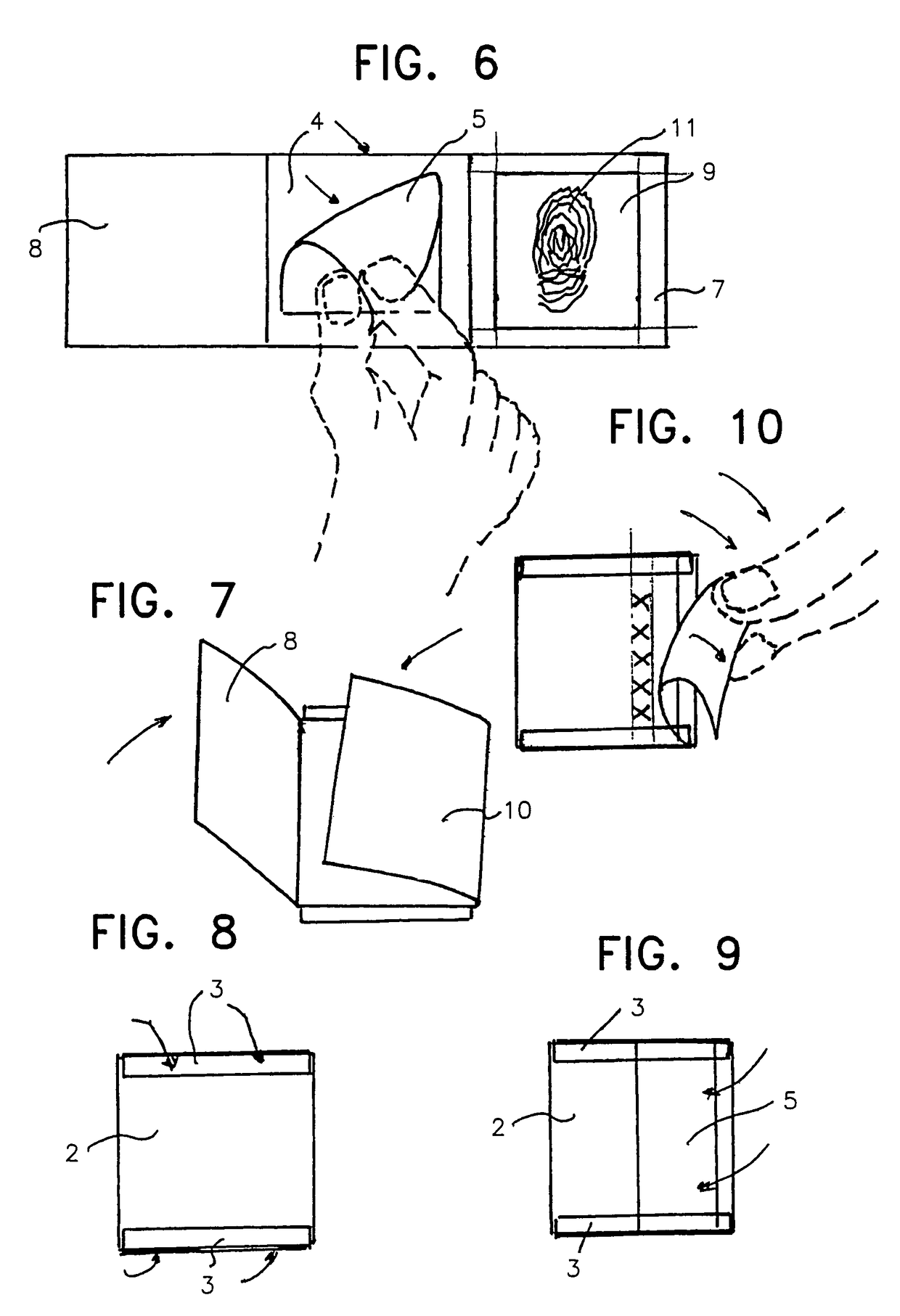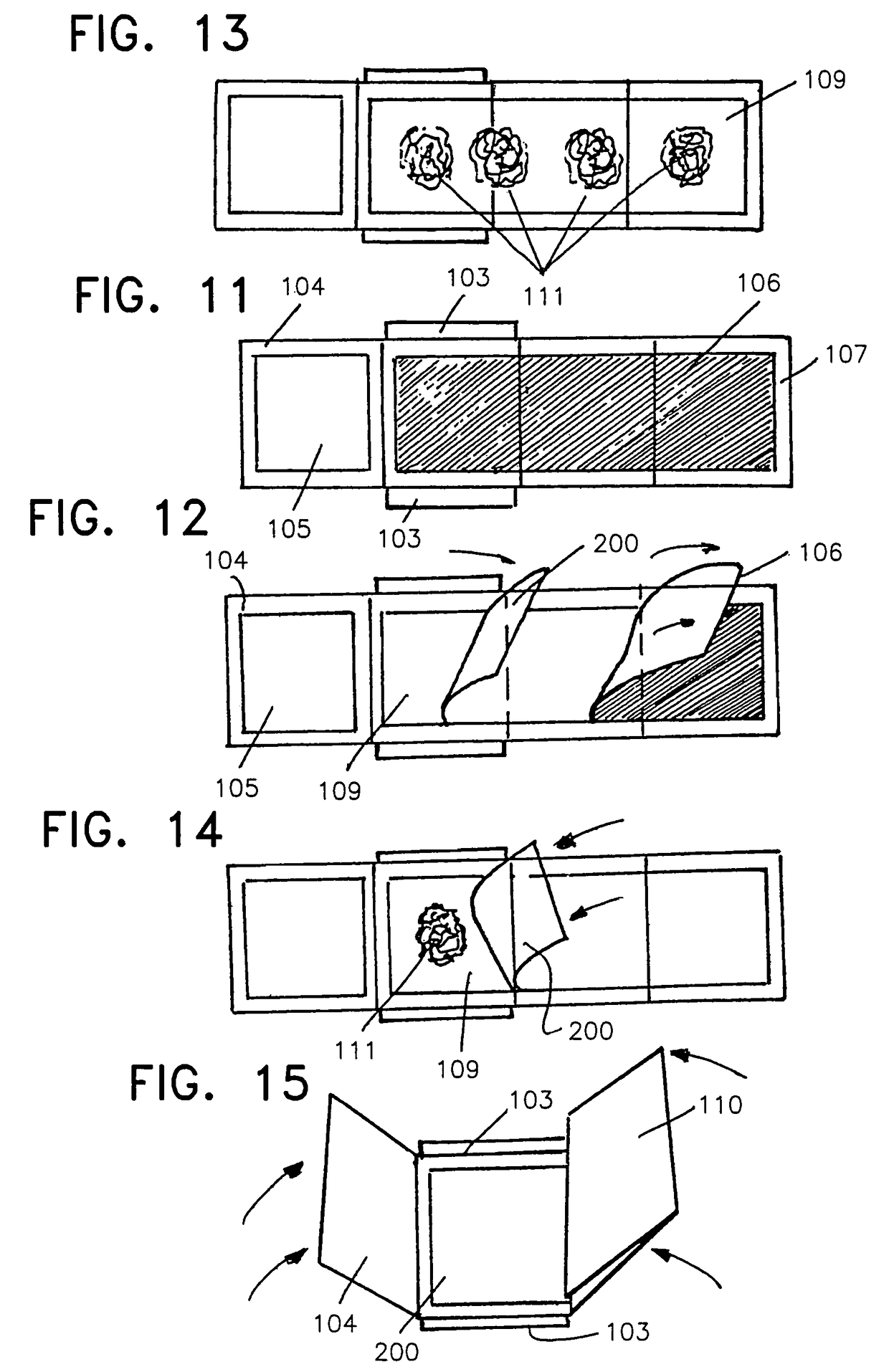Non-intrusive portable safety seal used to obtain people's DNA and genetic patterns through fingerprinting
a portable safety seal and fingerprinting technology, applied in the field of non-intrusive portable safety seals, can solve the problems of high risk of inappropriate use, danger of contamination of the person manipulating, etc., and achieve the effects of non-intrusive, safe method, and convenient us
- Summary
- Abstract
- Description
- Claims
- Application Information
AI Technical Summary
Benefits of technology
Problems solved by technology
Method used
Image
Examples
third embodiment
A third embodiment is provided, with the intention to reduce production costs and achieves an economical version, without being less effective.
This third version of the seal comprises only two sheets, eliminating the third sheet (6) (graphite or granulated) and the fourth sheet (9) (with adhesive on two surfaces) of the preferred embodiment.
This embodiment comprises the triptych base sheet and central sheet of polypropylene with adhesive on only one side. The difference is that an adhesive and a fine layer of ground pumice stone grains are spread on one internal surface so that the surface becomes rough or granulated. This is not a detachable or disposable sheet but the rough or granulated surface is a part of the same base sheet on one of the internal lateral sides.
In this case, the genetic material collected is included in the granulated surface and deposited between the micro-interstices generated by the space left between crushed granules of pumice stone. The difference with the...
PUM
| Property | Measurement | Unit |
|---|---|---|
| thick | aaaaa | aaaaa |
| thickness | aaaaa | aaaaa |
| diameter | aaaaa | aaaaa |
Abstract
Description
Claims
Application Information
 Login to View More
Login to View More - R&D
- Intellectual Property
- Life Sciences
- Materials
- Tech Scout
- Unparalleled Data Quality
- Higher Quality Content
- 60% Fewer Hallucinations
Browse by: Latest US Patents, China's latest patents, Technical Efficacy Thesaurus, Application Domain, Technology Topic, Popular Technical Reports.
© 2025 PatSnap. All rights reserved.Legal|Privacy policy|Modern Slavery Act Transparency Statement|Sitemap|About US| Contact US: help@patsnap.com



